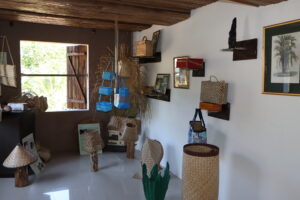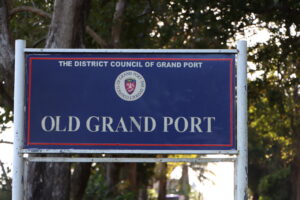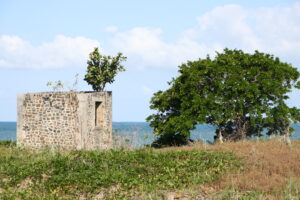Where sea and mountain meet
The village of Old Grand Port is known as the cradle of the island’s colonization, as the first settlement of Mauritius by the Dutch took place in this area. The village has a rich mix of historical, cultural and natural resources. The ruins that still exist today are a living testimony to the island’s vibrant history.
The village also has unique natural landscapes, such as Lion Mountain, as well as endemic fauna and flora, and its huge bay. This bay was the site of the historic “Battle of Grand Port” between the French and British in 1810 and is today a source of livelihood for the local community. It has been proclaimed a fishing reserve for its abundance of shellfish.
The development of tourism is one of the priorities of this village: the great potential of its various attractions and its unique historical value fosters the creation of opportunities in various economic activities directly and indirectly related to tourism, leading to the improvement of the standard of living of its inhabitants.
The village has all the basic and associated facilities conducive to tourism development, such as accommodation, a local community health center, a police station and traditional shops. On the cultural side, handicrafts and fishing are part of the life of the village, adding to its attractiveness, authenticity and originality.
Its multi-ethnic population, composed mainly of the local fishing community, farmers and craftsmen, continues to preserve the traditional way of life and cultures that once lived on the island in peace and harmony.
HIGHLIGHTS
-

Old Grand Port calls out for tradition
The Pandanus Coordination Center in conjunction with the Plant Propagation Unit are the main actors for the strategy to recover the existing activity of weaving and improve the livelihoods of marginalized weavers of the region. The Centre ensures production and marketing standards for the artisanal products made of “vacoas leaves”.
-

Harmonizing nature and human activities
Part of Old Grand Port’s lagoon has been instituted as fishing reserve, providing the legal framework to protect biodiversity in the area. The fishing activities are concentrated in two fish landing stations, increasing organization and visibility for the fishermen’ sales.
-

Natural preservation
The inhabitants of the village live along 5 km of coastline, which is resulting vulnerable as a consequence of climate change. As a result, the Central Government created a project of Coastal Protection, Landscaping and infrastructural works with the aim of preventing beach and soil erosion, embellishing the beach, and protecting the houses along the coastline.

